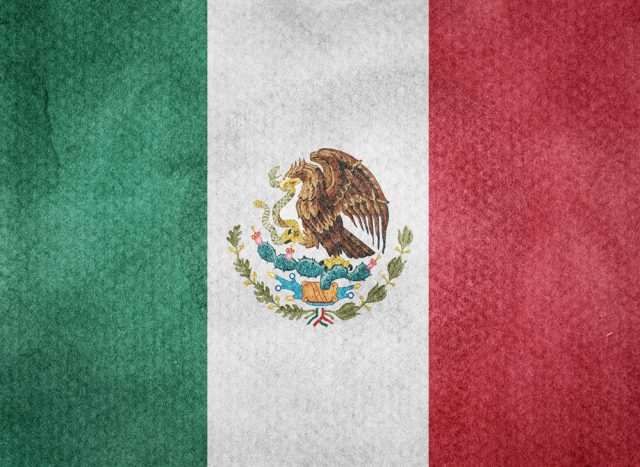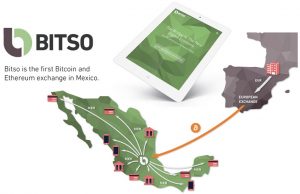By Justin O’ Connell,
The peso has steadily declined in the past three years and today sits at twenty-to-one to the dollar amid a period of economic uncertainty. In a nation of 120 million, 80 million lack access to basic financial services; that is, no banking and no credit.
Mexico does, however, have 100 million cell lines. 80 percent of the phones sold in 2015 were smart phones. In short, Mexico is a highly connected country. Mexico is also a very “young” country (the median age is 28 years old).
For perspective on this growing bitcoin market, the Bitcoin News team spoke with Bitso President and co-founder, Daniel Vogel.
Mexicans are Discovering Bitcoin
Bitcoin (BC): Why is volume exploding at Bitso?
Daniel Vogel (DV): Mexicans lack access to financial services. They’ve started to discover bitcoin and use it in their daily life. The use-cases are varied. People make payments in e-commerce, for instance. These are Mexicans without credit cards, bank accounts, and who have been excluded from e-commerce until bitcoin.
We see males between 16 and 21 making $20 purchases of bitcoin once every six weeks. After doing research, we found these were young adults without credit cards, who were fans of gaming platforms they couldn’t buy before bitcoin.
One of the largest manufacturers started accepting bitcoins, and we experienced a rush of young guys who literally didn’t even know what bitcoin was. It was their only way to make payments for these platforms.
I am not sure some even understand bitcoin, but they do understand the concept of how to convert pesos into bitcoins, and send bitcoins to merchants.
The Five Segments of Bitso’ Customers
BC: Can you tell us more about Bitso’s customers?
DV: We break down our clients into different segments. We have roughly five different segments. All of them growing.
There are people investing in bitcoin for savings. These people understand diversification. It’s very difficult for them to save as a Mexican. You can’t have a US denominated bank account. Investing small amounts of money in Mexico’s stock exchange is nearly impossible.
The second segment use it as a way to access payments like e-commerce. Maybe they saw Microsoft accepted bitcoin. You get people who understand after their bank has denied them of a credit card many times.
The third segment trade bitcoin and cryptocurrency for speculation. We these think this use-case is least interesting, as you can trade any commodity in the world. But we need these people. They bring liquidity. They improve prices. We’ve seen an increase in this activity.
The fourth segment is remittances. We have a number of people who have started to rely on bitcoin as a way to send money to Mexico. When you send money into Mexico with bitcoin, you practically get paid for doing so because the demand, and premium, is so high. This small but growing use-case includes one interesting example in Chicago, in one of the most Mexican neighborhoods or streets there, called eighteenth street. You can find a bitcoin ATM there. People send bitcoin to Mexico with this machine.
The fifth segment will likely see a big increase in 2017; that is, people building products on top of our exchange, and who rely on bitcoin as a medium of exchange. Sometimes they don’t even advertise to their customers they use bitcoin for cross-border transactions, business-to-business.
The Peso
BC: How has the peso’s plight factored in?
DV: Mexico’s currency has significantly devalued against the dollar in the past six months and over the course of several years. For those living in Mexico, there is no access to investments protected from Mexico’s volatile financial system.
There is a lot of uncertainty in the Mexican markets with the recent election of Trump. Questions arise for the Mexico economy: ‘What does this mean for NAFTA, remittances, trade, and commerce?’ That uncertainty has made the peso the weakest it’s looked since the nineties.
Some understand they can hedge Mexico economic risk with bitcoin. We’ve seen increased demand there. If you look at the price on our platform, it’s higher than the equivalent price in the US due to buying pressure within Mexico.
Poverty & Bitcoin Adoption
BC: What role does poverty in Mexico play in bitcoin adoption?
DV: I think it’s helping adoption. There’s no way to save in anything that does not have systemic risk with the mexican economy, and bitcoin provides that. The day of Trump’s election, the peso plummeted. The Mexican stock market plummeted.
We are seeing more interest from diverse players, from highly sophisticated family offices that want to invest in this technology, this currency, as an asset to not as wealthy or sophisticated individuals who get the basic concept of seeing the Peso devalue. Mexican students, too, who are studying in the US at a four-year college or two year master degrees, but their savings are consistently devalued. We allow people to purchase starting at two dollars worth of bitcoins and less, which people take advantage of.
The Legality of Bitcoin
BC: What is the outlook for bitcoin’s legality in Mexico?
DV: Over last year we have been meeting with regulatory authorities in Mexico – the central bank, the Ministry of Finance and the Banking and Securities Commission. We have been very open with what we are doing, and educating them. We get a mixed reaction.
Some believe this could be an answer to Mexico’s financial inclusion problems.
We’re working on regulation with the authorities, and we still don’t know what to expect. We have meetings lined up with regulatory bodies in January. We are optimistic we will receive regulatory clarity. We still operate in a gray area, which is how most exchanges have operated.
The recent growth in transaction volume in Mexico, I think its indication to authorities we need to look into this very seriously, and very quickly.


